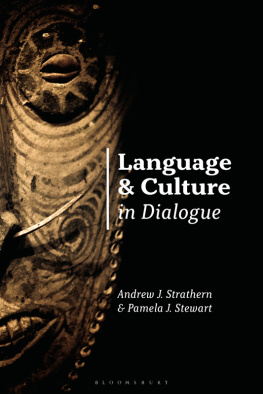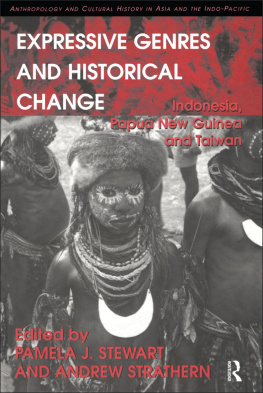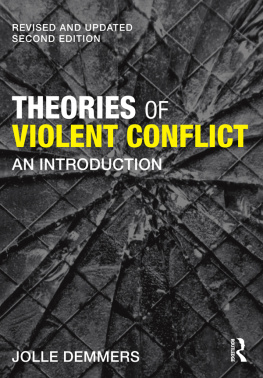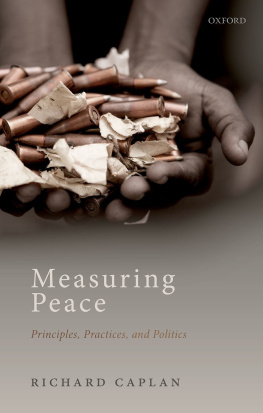
Professors Andrew Strathern and Pamela J Stewart (Strathern) are a husband and wife research team with a long history of joint publication and research. Presently based at the Anthropology Department, University of Pittsburgh, they have lived and worked in Asia, Australia, New Zealand, Europe and the Pacific, and presented lectures and published in many countries of the Pacific region, Europe and Asia. Their research interests are wide-ranging and include anthropology, philosophy and religious studies. They are co-editors of three book series and, for many years, of the Journal of Ritual Studies , and authors of more than 45 books and 175 articles. They have been jointly awarded the 2012 De Carle Lectureship (University of Otago, Dunedin, New Zealand) to present a series of public lectures.
Other titles in UQPs New Approaches to Peace and Conflict series
Breathing: Violence In, Peace Out by Ivana Milojevi
Ending Holy Wars: Religion and Conflict Resolution in Internal Armed Conflicts by Isak Svensson
When Blood and Bones Cry Out: Journeys through the soundscape of healing and reconciliation by John Paul Lederach & Angela Jill Lederach
Reporting Conflict: New directions in peace journalism by Jake Lynch & Johan Galtung
Also by Andrew Strathern and Pamela J Stewart
Kinship in Action: Self and group
Ritual (eds)
Landscape, Heritage, and Conservation: Farming issues in the European Union (eds)
Curing and Healing: Medical anthropology in global perspective (2nd edn)
Religious and Ritual Change: Cosmologies and histories (eds)
Exchange and Sacrifice (eds)
Asian Ritual Systems: Syncretisms and ruptures (eds)
Expressive Genres and Historical Change: Indonesia, Papua New Guinea and Taiwan (eds)
Contesting Rituals: Islam and practices of identity-making (eds)
Anthropology and Consultancy: Issues and debates (eds)
Empowering the Past, Confronting the Future: The Duna people of Papua New Guinea
Witchcraft, Sorcery, Rumors, and Gossip
Landscape, Memory, and History: Anthropological perspectives (eds)
Violence: Theory and ethnography
Remaking the World: Myth, mining and ritual change among the Duna of Papua New Guinea
Gender, Song, and Sensibility: Folktales and folksongs in the Highlands of New Guinea
Minorities and Memories: Survivals and extinctions in Scotland and Western Europe
Arrow Talk: Transaction, transition, and contradiction in New Guinea Highlands History
Identity Work: Constructing Pacific lives (eds)
The Pythons Back: Pathways of comparison between Indonesia and Melanesia
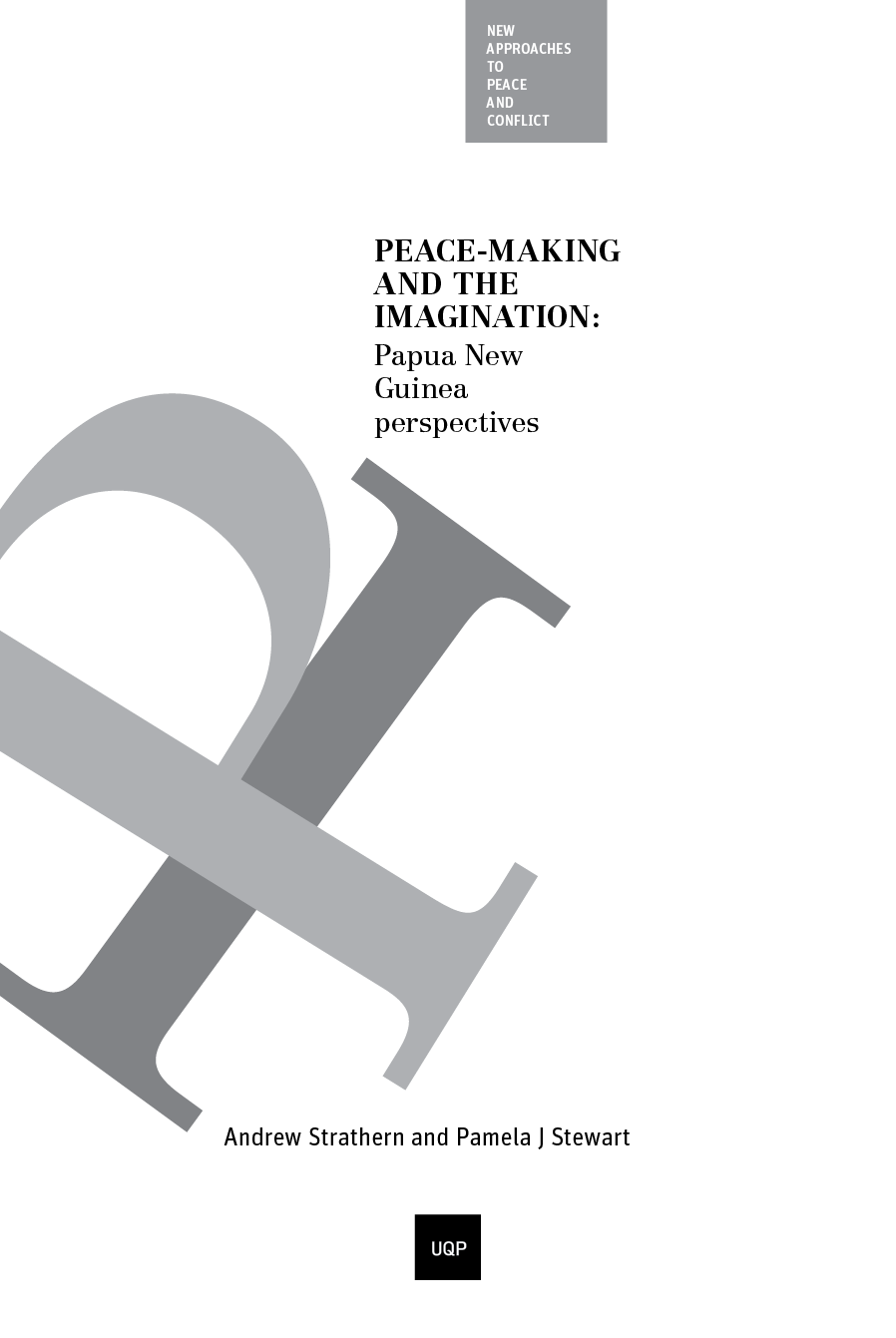
To those who are mindful of peaceful balance.
Note from Series Editor
UQPs New Approaches to Peace and Conflict series builds on the wisdom of the first wave of peace researchers while addressing important 21st century challenges to peace, human rights and sustainable development. The series publishes new theory, new research and new strategies for effective peacebuilding and the transformation of violent conflict. It challenges orthodox perspectives on development, conflict transformation and peacebuilding within an ethical framework of doing no harm while doing good.
Professor Kevin P Clements
Chair in Peace and Conflict Studies
Director of The National Centre for Peace and Conflict Studies
University of Otago, New Zealand
Contents
Preface
There are two opposite views of violence in human affairs. One is that it is an ingrained propensity and therefore there are inherent problems in peace-making. The other is that people are inclined to cooperative and peaceful behaviour, and violence represents an abnormal breakdown of this state of relationships. These two extreme views appear quite inadequate whenever we examine, in its full context, any sequence of behaviour or events. There is plenty of evidence of capacities for peace-making in the interests of political equilibrium; there is also plenty of evidence that such an equilibrium may become fragile and be replaced over time by episodes of violence that can even reach, or border on, genocide. If we take a processual or in longer diachronic terms a historical viewpoint, we are likely to see that there is an alternation or undulating swing between these extremes, or that the extremes are never met in practical terms: neither fully peaceful nor entirely violent outcomes are actually the norm, in the sense of the most usual outcomes. We need to study the forces that tip the patterns in one direction or another at different junctures of time. The forces in play include perceptions of self-interest, ideological syndromes and schemata, emotional dispositions, the structural encoding of values such as honour and revenge or religious notions of peace/war, and relative perceptions of power, including those involved in gendered fields of conduct. Whatever the underlying predispositions may be, then, the practical outcomes in any sequence of interactions will be the result of multiple interplays of factors of the sort we have just listed and will therefore be difficult to analyse and still more difficult to predict.
There can also be a tension between factors. Perceptions of self-interest are themselves influenced by cultural values, and these values may generate conflicts, for example between individuals and various levels of group interests. Self-interest, further, may collide with religious concerns or be ideologically welded together with these, as in cases where either violent or peaceful actions appear to be enjoined by religious notions and supplied with schemata of merit derived ultimately from cosmology. Senses of transcendence may be needed in order to pull outcomes in a particular direction. By transcendence here we mean influences that override others. The idea of enlightened self-interest is an example of such influences, because it implies that the enlightenment at work may encompass many considerations and a balancing out among these with reference to some overall aims. We do not invoke the idea of rationality here, because this term itself is often given an ideological loading and needs to be broken down into its various components. Even if we distinguish, as Max Weber did, between the rationality of means and the rationality of ends, ideologies may be involved at any point in the definitions used.
The Papua New Guinea Highlands provide an important arena in which a nuanced examination of such issues can be conducted, with an array of cross-cultural synchronic and diachronic materials. Using these materials it is possible to discuss and compare pre-colonial, colonial and post-colonial circumstances. One basic axis of comparison has to do with expansion in the scale of social relations. In the colonial state policies, the aim was to incorporate local societies into the state structure. Pacification was the first plank of this policy, economic and political development the second. (Development included expatriate business enterprises, which required a manageable social context for their profitable success. It also included over time the need to promote local cash-making activities, in order to acquire cooperation from the people and to create a category of tax-paying consumers. Plantations and small holdings were the initial instruments of this approach to inducing change.) The state power wished to claim a monopoly over the control of physical force, or violence, in the canonical Weberian mode. Local societies, however, were premised on the relative autonomy of local groups. Pacification was therefore a prerequisite of state control. With limited resources, the colonial government officers soon realised that they had to harness the indigenous peoples own peace-making rituals in order to achieve pacification itself, although this by no means precluded the use of governmental force on occasion, especially in initial periods of demonstrating governmental power.
Next page

